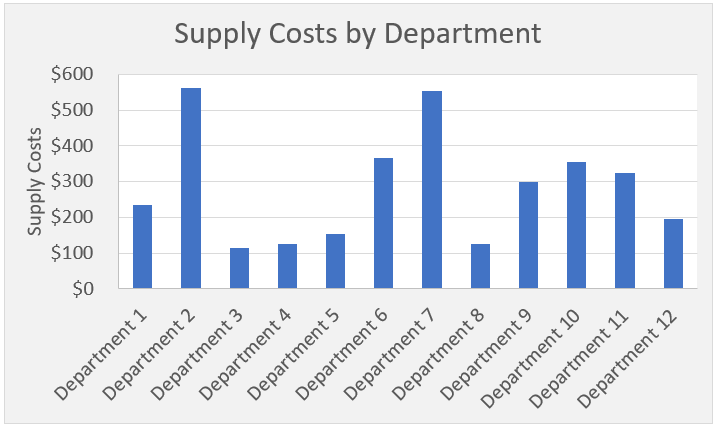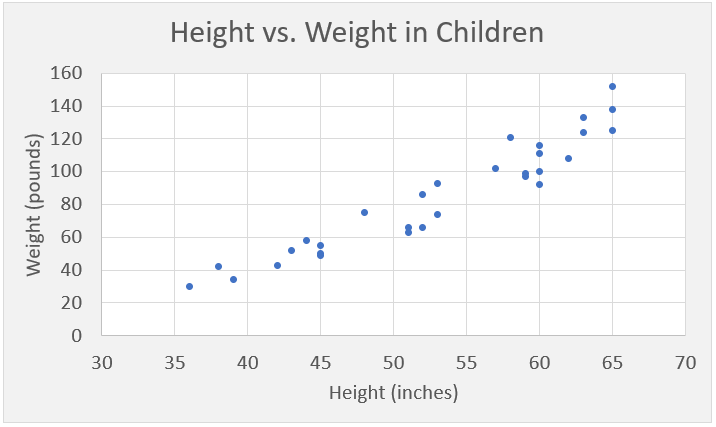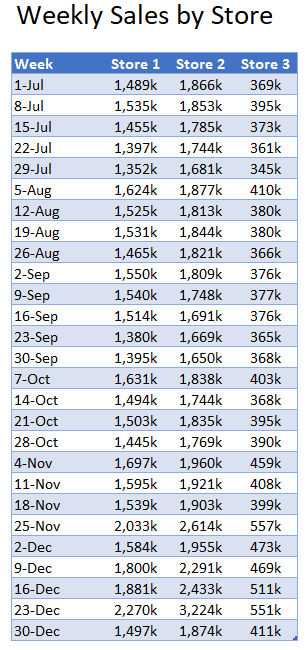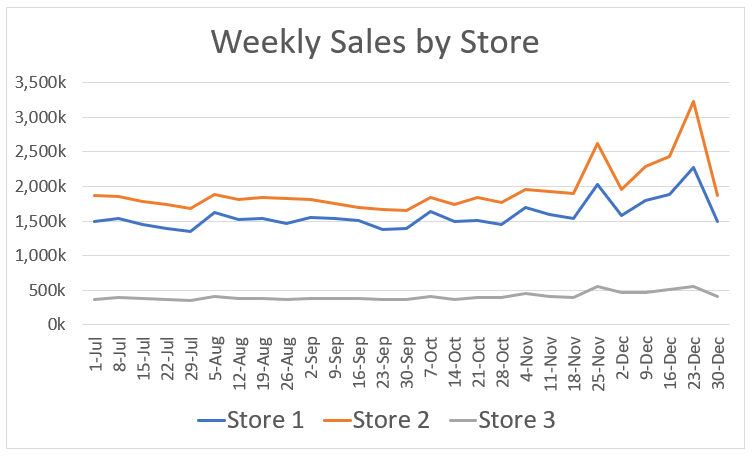
In an increasingly data-driven world, the ability to communicate effectively with data is becoming an indispensable skill. It doesn't matter how convincing your data is if you can't communicate your insights clearly.
One of the biggest decisions you have to make when communicating with data is how you will present that data to others. How do you choose among the many possible methods of presenting your information?
Which one will be the easiest to understand? Which approach will be the most effective?
Should I create a chart or graph? Or will it be better to share my entire data table?
Quick NavigationChoosing the best format for presenting your data can go a long ways to determining the success of your communication efforts.
This guide will walk you through the most important information you need to know to make the best decision for your situation.
Before you can decide what type of data visual you should use, it is important to understand what your options are, and what makes each of them unique. By understanding the strengths and weaknesses of each approach, you can make the most effective choice for sharing your data.
At their most basic level, tables are a visual arrangement of data, typically in rows and columns. While numeric data is the most common type of data contained in tables, they could also include text or even visuals such as icons.
The information in tables is typically displayed in simple rows and columns, although some specialized tables can utilize much more complex structures. This layout is designed to help readers read and compare the information in the table and reach the desired insights.
The tables below provide some examples of how tables can be used to show information over time or to compare different options to each other.

Item 1
Item 2
Item 3
Item 4
Item 5
Charts can include any visualization of information in which data is represented by some combination of text, symbols, or drawings. This term can include anything from basic bar graphs to maps or even hand-drawn diagrams.
The primary difference between charts and tables is that while tables focus on presenting data in a simple tabular form, charts can take just about any form. Charts can be used to illustrate relationships in much more varied ways. The focus is on making the information in the chart easier to interpret visually, rather than reading and interpreting.
As shown in the examples below, charts can be used to show the breakdown of costs by department, the relationship between height and weight in children, or many other situations


You might be asking yourself if charts and tables are your only options. What about graphs? Are those better or worse than charts? How are they different?
Many people use the terms chart and graph interchangeably. And they are quite similar. Technically speaking, graphs are really a subset of charts. They are a specific type of chart that show the mathematical relationship between sets of data.
There are other similar terms that can be used to describe visual depictions of data, such as plots or figures. For our purposes, I am going to stick with the generic term charts to refer to all non-table data visualizations. This is the terminology used internally within Excel, so for consistency, that is what we will use going forward.
It may be tempting to just choose one option and use it all the time to share your data.
My data is already in a table in Excel, so I'll just share that. Besides, I wouldn't know which type of chart to use anyway.
I think colors and pictures look better. Why would I use a boring table instead of a fancy chart?
Both of these extremes have their drawbacks. By understanding the advantages and disadvantages of tables and charts, you can make sure you are using the approach that will get you the best results.
Luckily, deciding which way to go is not as difficult as it may seem.
We will cover several factors that you should consider when choosing to use a table or chart, but there is one factor that should be your primary concern. If you only consider this one factor, you will likely choose the right approach most of the time.
Is your goal to share specific data, or are you sharing higher-level insights or trends?
Generally speaking, tables are your best bet if you want to share specifics, and charts will work best for trends or summary observations.
The reason for this is related to how humans read and interpret information. Our brains have been trained to process information in certain ways that are related to how the information is presented. By aligning the presentation approach to the way you want your audience to process the information, you will have more success in your communications.
Let's go through a quick example to show how this works in real life.
Below you will see an example of how weekly sales information across three stores could be summarized in a table. All of the individual values for each store are shown so that they can be reviewed and compared.
If you are trying to share overall trend information or highlight an interesting observation, it could be a little difficult for your audience to interpret.
Let's try it out.
Take the next 5-10 seconds to review the table and come up with one or two key takeaways you notice based on the information in the table.

Not too easy, is it?
My guess is that if I asked 10 people what their key observations were, I would probably get at least 7 different answers. That's not very effective.
Now let's say your audience wants to know how each store performed during the week of October 7.
That's much easier. Most people will be able to quickly and intuitively skim down to 7-Oct and see the specific results for each store.
As a contrast to the table above, let's see what would happen if a chart was used instead to represent the same data.
Take the same 5-10 seconds to review the chart and make one or two observations.

This is much easier than with the table. In just a few seconds, most people are likely to come up with some variation of these two observations:
The visual nature of the data presentation makes it much easier to quickly see the trends and outliers in the data.
As you can see from the examples above, tables are best used when you want your audience to dig into the specifics of the data you are sharing. In this case, tables will make it much easier to read and interpret the information being presented.
Times when tables are likely your best choice include: